 Shiho Fukada for The New York Times
Shiho Fukada for The New York Times
Preservationists say the demolition of the Old City section of Kashgar, top, is a blow to China’s Islamic and Uighur culture. But work has already begun, center, to raze about 85 percent of the area.
By MICHAEL WINES Published: May 27, 2009
KASHGAR, China – A thousand years ago, the northern and southern branches of the Silk Road converged at this oasis town near the western edge of the Taklamakan Desert. Traders from Delhi and Samarkand, wearied by frigid treks through the world’s most daunting mountain ranges, unloaded their pack horses here and sold saffron and lutes along the city’s cramped streets. Chinese traders, their camels laden with silk and porcelain, did the same.
Skip to next paragraph
Multimedia
 Audio Slide Show
Audio Slide Show
A City, and People, at a Crossroads
Enlarge This Image  Shiho Fukada for The New York Times
Shiho Fukada for The New York Times
Preservationists say the demolition of the Old City section of Kashgar is a blow to China’s Islamic and Uighur culture.
The traders are now joined by tourists exploring the donkey-cart alleys and mud-and-straw buildings once window-shopped, then sacked, by Tamerlane and Genghis Khan.
Now, Kashgar is about to be sacked again.
Nine hundred families already have been moved from Kashgar’s Old City, “the best-preserved example of a traditional Islamic city to be found anywhere in central Asia,” as the architect and historian George Michell wrote in the 2008 book “Kashgar: Oasis City on China’s Old Silk Road.”
Over the next few years, city officials say, they will demolish at least 85 percent of this warren of picturesque, if run-down homes and shops. Many of its 13,000 families, Muslims from a Turkic ethnic group called the Uighurs (pronounced WEE-gurs), will be moved.
In its place will rise a new Old City, a mix of midrise apartments, plazas, alleys widened into avenues and reproductions of ancient Islamic architecture “to preserve the Uighur culture,” Kashgar’s vice mayor, Xu Jianrong, said in a phone interview.
Demolition is deemed an urgent necessity because an earthquake could strike at any time, collapsing centuries-old buildings and killing thousands. “The entire Kashgar area is in a special area in danger of earthquakes,” Mr. Xu said. “I ask you: What country’s government would not protect its citizens from the dangers of natural disaster?”
Critics fret about a different disaster.
“From a cultural and historical perspective, this plan of theirs is stupid,” said Wu Lili, the managing director of the Beijing Cultural Protection Center, a nongovernmental group devoted to historic preservation. “From the perspective of the locals, it’s cruel.”
Urban reconstruction during China’s long boom has razed many old city centers, including most of the ancient alleyways and courtyard homes of the capital, Beijing.
Kashgar, though, is not a typical Chinese city. Chinese security officials consider it a breeding ground for a small but resilient movement of Uighur separatists who Beijing claims have ties to international jihadis. So redevelopment of this ancient center of Islamic culture comes with a tinge of forced conformity.
Chinese officials have offered somewhat befuddling explanations for their plans. Mr. Xu calls Kashgar “a prime example of rich cultural history and at the same time a major tourism city in China.” Yet the demolition plan would reduce to rubble Kashgar’s principal tourist attraction, a magnet for many of the million-plus people who visit each year.
China supports an international plan to designate major Silk Road landmarks as United Nations World Heritage sites – a powerful draw for tourists, and a powerful incentive for governments to preserve historical areas.
But Kashgar is missing from China’s list of proposed sites. One foreign official who refused to be identified for fear of damaging relations with Beijing said the Old City project had unusually strong backing high in the government.
The project, said to cost $440 million, began abruptly this year, soon after China’s central government said it would spend $584 billion on public works to combat the global financial crisis.
It would complete a piecemeal dismantling of old Kashgar that began decades ago. The city wall, a 25-foot-thick earthen berm nearly 35 feet high, has largely been torn down. In the 1980s, the city paved the surrounding moat to create a ring highway. Then it opened a main street through the old town center.
Still, much of the Old City remains as it was and has always been. From atop 40 vest-pocket mosques, muezzins still cast calls to prayer down the narrow lanes: no loudspeakers here. Hundreds of artisans still hammer copper pots, carve wood, hone scimitars and hawk everything from fresh-baked flatbread to dried toads to Islamic prayer hats.
And tens of thousands of Uighurs still live here behind hand-carved poplar doors, many in tumbledown rentals, others in two-story homes that vault over the alleys and open on courtyards filled with roses and cloth banners.
The city says the Uighur residents have been consulted at every step of planning. Residents mostly say they are summoned to meetings at which eviction timetables and compensation sums are announced.
Although the city offers the displaced residents the opportunity to build new homes on the sites of their old ones, some also complain that the proposed compensation does not pay for the cost of rebuilding.
“My family built this house 500 years ago,” said a beefy 56-year-old man with a white crew cut, who called himself Hajji, as his wife served tea inside their two-story Old City house. “It was made of mud. It’s been improved over the years, but there has been no change to the rooms.”
In Uighur style, the home has few furnishings. Tapestries hang from the walls, and carpets cover the floors and raised areas used for sleeping and entertaining. The winter room has a pot-bellied coal stove; the garage has been converted into a shop from which the family sells sweets and trinkets. Nine rooms downstairs, and seven up, the home has sprawled over the centuries into a mansion by Kashgar standards.
But Hajji and his wife lost their life’s savings caring for a sick child, and the city’s payment to demolish their home will not cover rebuilding it. Their option is to move to a distant apartment, which will force them to close their shop, their only source of income.
 The New York Times
The New York Times
Multimedia
 Audio Slide Show
Audio Slide Show
A City, and People, at a Crossroads
Enlarge This Image  Shiho Fukada for The New York Times
Shiho Fukada for The New York Times
Mahire, 19, left, eating lunch at the 500-year-old home of her in-laws in Kashgar, China. The building is scheduled to be demolished as part of a government plan to guard against earthquake damage.
Enlarge This Image  Shiho Fukada for The New York Times
Shiho Fukada for The New York Times
As part of the reconstruction of Kashgar, China will move many of its 13,000 families, Muslims from a Turkic ethnic group called the Uighurs.
“The house belongs to us,” said Hajji’s wife, who refused to give her name. “In this kind of house, many, many generations can live, one by one. But if we move to an apartment, every 50 or 70 years, that apartment is torn down again.
“This is the biggest problem in our lives. How can our children inherit an apartment?”
Building inspectors have deemed most of the oldest homes unsafe, including all mud-and-straw structures, the earliest form of construction. They will be leveled and, in many cases, rebuilt in an earthquake-resistant Uighur style, the city promises.
But three of the Old City’s seven sectors are judged unfit for Uighur architecture and will be rebuilt with decidedly generic apartment buildings. Two thousand other homes will be razed to build public plazas and schools. Poor residents, who live in the smallest homes, already are being permanently moved to boxy, concrete public housing on Kashgar’s outskirts.
What will remain of old Kashgar is unclear. Mr. Xu said that “important buildings and areas of the Old City have already been included in the country’s special preservation list” and would not be disturbed.
No archaeologists monitor the razings, he said, because the government already knows everything about old Kashgar.
Kashgar officials do have good reason to worry about earthquakes. Last October, a 6.8 magnitude quake struck barely 100 miles away. In 1902, an 8.0-magnitude quake, one of the 20th century’s biggest, killed 667 residents.
Some residents say they also prefer a more modern environment. The thousand-year-old design that gives the Old City its charm often precludes basics like garbage pickup, sewers and fire hydrants.
In Mr. Xu’s view, demolition will give the Uighurs a better life and spare them from disaster in one fell swoop.
All that said, there is a certain aura of forcible eviction about the demolition, an urgency that fear of earthquakes does not completely explain. The city is offering cash bonuses to residents who move out early – about $30 for those who vacate within 20 days; $15 if they move in a month. Homes are razed as soon as they become empty, giving some alleys a gap-tooth look.
On Kashgar television, a nightly 15-minute infomercial hawks the project like ginsu knives, mixing dire statistics on seismic activity with scenes of happy Uighurs dancing in front of their new concrete apartments.
“Never has such a great event, such a major event happened to Kashgar,” the announcer intones. He boasts that the new buildings “will be difficult to match in the world” and that citizens will “completely experience the care and warmth of the party” toward the Uighur ethnic minority.
The infomercial also notes that Communist Party officials from Kashgar to Beijing are so edgy over the prospect of an earthquake “that it is disturbing their rest.”

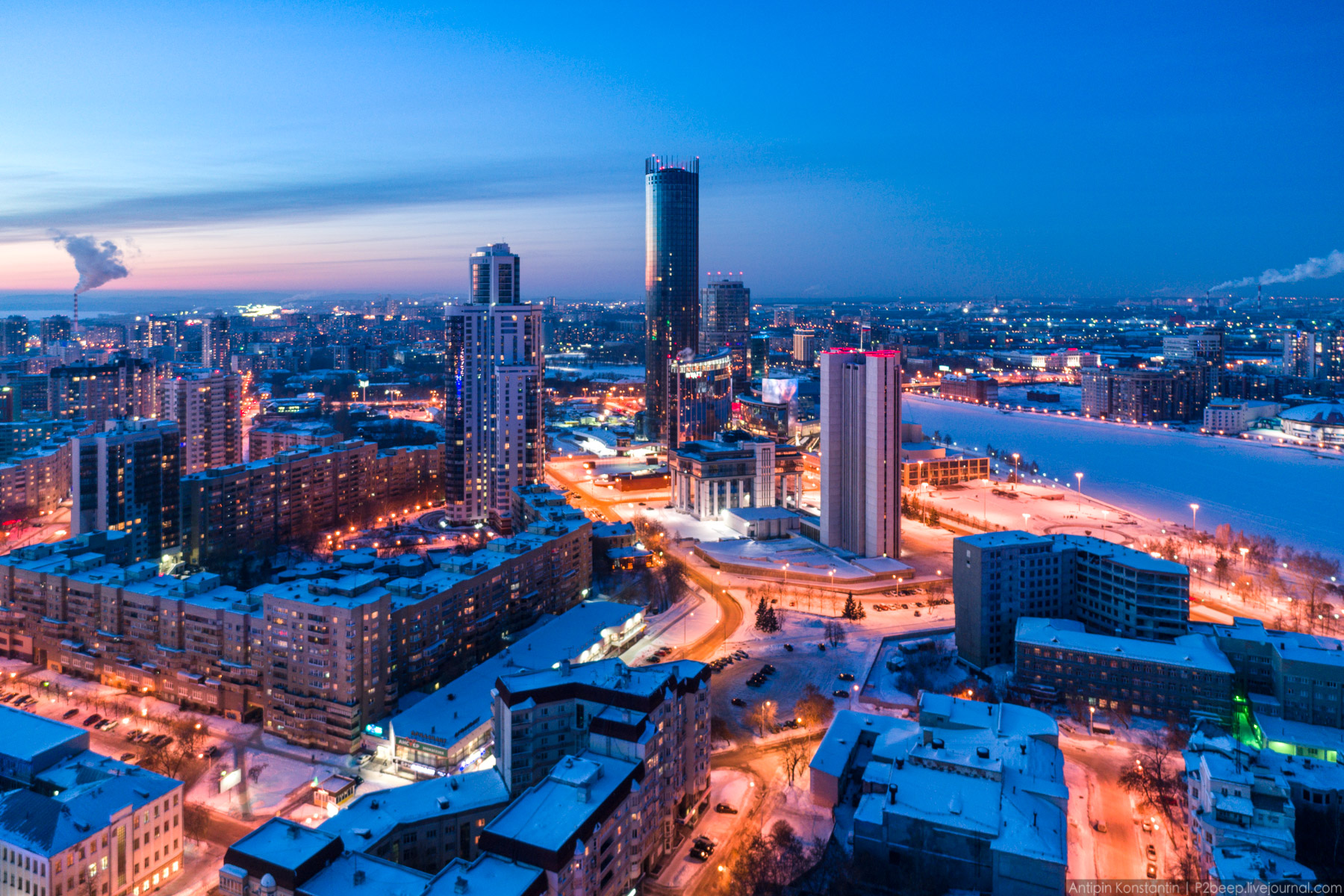
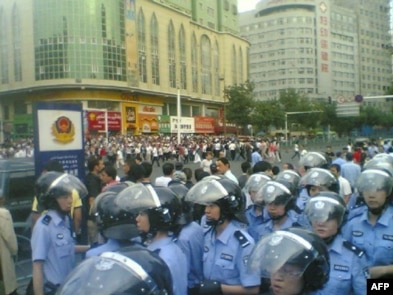

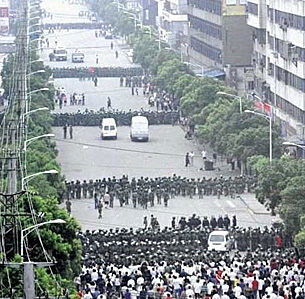





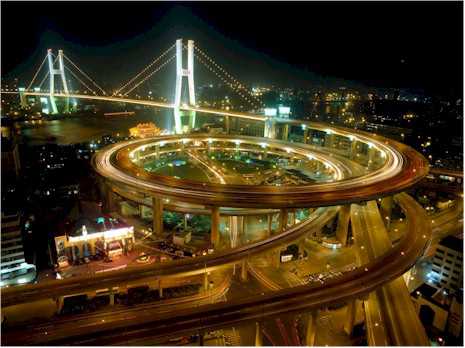
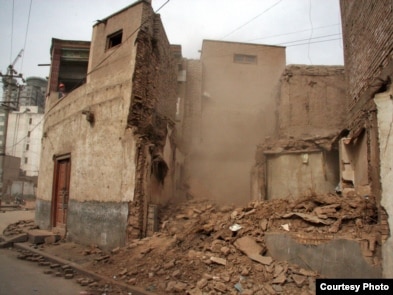

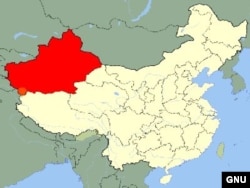
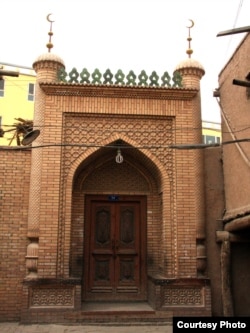
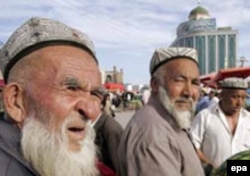
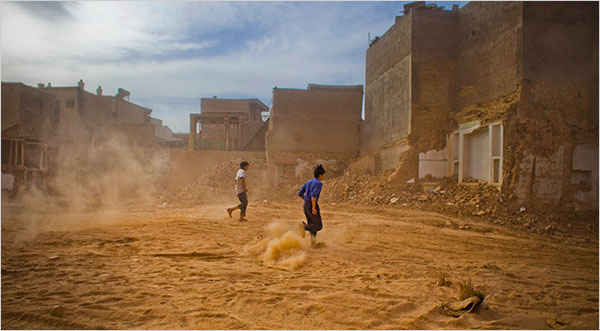
 Shiho Fukada for The New York Times
Shiho Fukada for The New York Times Audio Slide Show
Audio Slide Show  Shiho Fukada for The New York Times
Shiho Fukada for The New York Times The New York Times
The New York Times Shiho Fukada for The New York Times
Shiho Fukada for The New York Times Shiho Fukada for The New York Times
Shiho Fukada for The New York Times